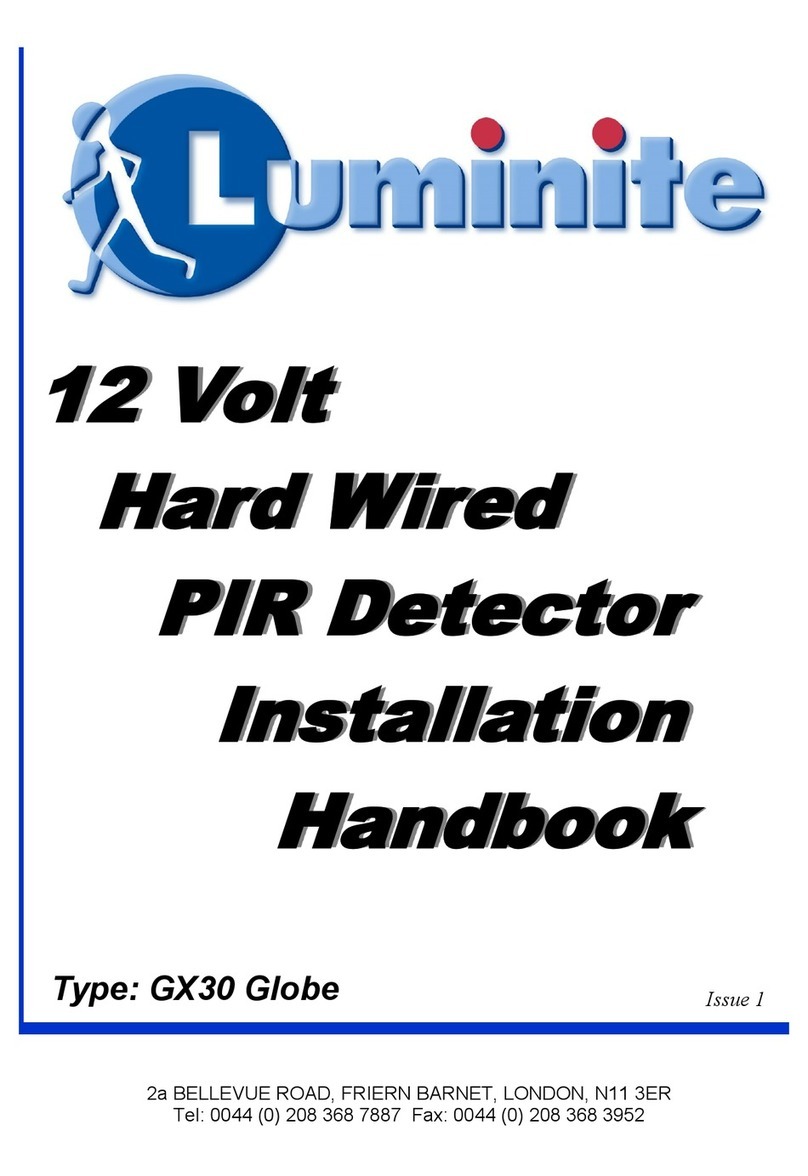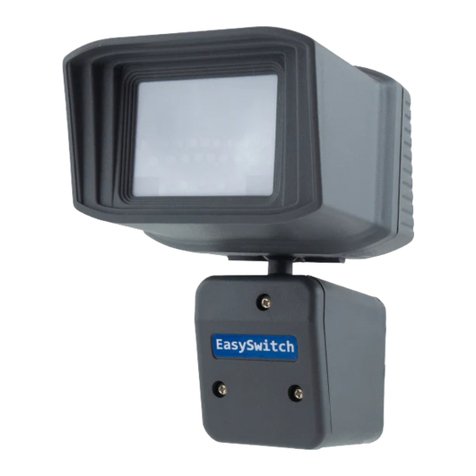ESD30 Wireless PIR Detector Installation Handbook Page 6
Pairing the ESD30 to the receiver
All Easyswitch receivers will pair in the same way and so the following instructions are
common to all.
1. Power up the receiver and press the learn button. The learn LED will light for a
few seconds during which time a transmission must be made from the ESD30.
2. With the receiver in learn mode, connect the batteries to the ESD30 and the
receiver‘s learn LED will flash three times to show that it has paired with the
ESD30.
Alternatively, you can pair a receiver with an ESD30 that is already operating by putting
the receiver into learn mode and then walking in front of the ESD30 which will make it
transmit. The only problem with this method is if you have more than one ESD30 as
you cannot be sure which one has transmitted and it is possible to pair to the wrong
one.
To flush the memory of the receiver, press and hold the learn button for ten seconds
until the red led turns off.
For individual receiver information please see the operating installation guide for that
particular product.
Walk testing
1. Using a pointed tool such as a pencil tip or a cocktail stick, select switch 4 to ON
(up).
2. Adjust the lens gimbal to face the direction of desired detection coverage. The
lens may be angled up or down accordingly and the shutters can occlude part of
the lens that is not required.
3. Always loosely re-fit the front cover before beginning the walk test to avoid air
currents giving false detections.
4. Each time detection occurs, the high brightness red LED will light. Stand still
and wait for the LED to turn off. Continue to stay motionless for a few seconds
after the LED turn off before continuing to test. NB: If the red LED fails to light
again it is because you or something else is still being detected. Ensure the
cover is fitted and stand very still between detections.
5. You can increase or decrease the sensitivity using switch 1 and also increase
the pulse counting using switch 2.
6. When you are satisfied with the area coverage, select switch 4 to off.



























